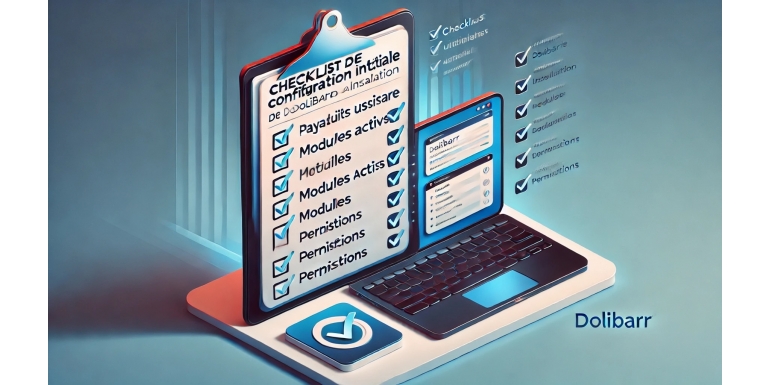
Once Dolibarr is installed, it’s essential to perform an initial configuration to tailor the software to your company’s specific needs. A proper setup ensures smooth use and avoids potential issues down the line. In this article, we provide a comprehensive checklist of essential settings to configure right after installing Dolibarr.
1. Set Language and Regional Settings
The first step is to configure the language and regional settings of your Dolibarr interface. This affects the display of menus, date formats, and country-specific options.
- Access: Go to
Home > Setup > Display. - Actions:
- Select the main language (e.g., English).
- Configure the date and time format according to your location.
- Ensure the default language matches the one used in your organization.
Tip: If you work with international partners, enable multiple languages for your documents.
2. Configure Currencies
If you work with foreign currencies, configuring them is essential for managing quotes, invoices, and payments.
- Access: Navigate to
Home > Setup > Currency. - Actions:
- Add the currencies you use (e.g., USD, EUR).
- Set a default currency.
- Update exchange rates if necessary.
3. Set Tax Rates
Tax rates need to be configured so Dolibarr applies the correct percentages when invoicing.
- Access: Go to
Home > Setup > Miscellaneous > Taxes. - Actions:
- Add the tax rates commonly used in your business (e.g., 20%, 10%).
- Set the default applicable rate.
- If you’re VAT-exempt, configure the relevant rules.
Tip: If you operate in multiple countries, enable multi-country VAT management.
4. Create User Accounts
To ensure proper access control, create user accounts for each team member. This allows you to track actions and assign specific permissions.
- Access: Go to
Home > Users & Groups > New User. - Actions:
- Enter each user’s details (name, email).
- Assign appropriate roles (e.g., administrator, sales representative, accountant).
- Set access restrictions as needed.
Tip: Enable activity logging for better tracking.
5. Enable and Configure Necessary Modules
Dolibarr is modular, meaning you can enable only the features you need, such as commercial management, invoicing, or inventory management.
- Access: Navigate to
Home > Setup > Modules/Applications. - Actions:
- Activate modules relevant to your business.
- Configure specific settings for each module (e.g., invoice templates for the invoicing module).
Tip: Avoid overloading your interface with unnecessary modules to keep it simple.
6. Set Up Your Company Information
Your company’s identity should be configured to appear on quotes, invoices, and other documents.
- Access: Go to
Home > Setup > Company/Organization. - Actions:
- Enter your company’s name, address, VAT number, and contact details.
- Upload your company logo.
- Ensure all legally required information is included.
7. Configure Document Templates
Customize your commercial documents to reflect your company’s branding.
- Access: Go to
Home > Setup > Modules/Applications > Billing/Invoicing > Models. - Actions:
- Choose a suitable template or customize one.
- Add a footer with your legal notices.
- Test the document appearance by generating a quote or invoice.
8. Set Up Payment Methods
Payment methods are essential for recording and managing financial transactions.
- Access: Go to
Home > Setup > Miscellaneous > Payment Methods. - Actions:
- Add common payment methods (e.g., bank transfer, check, credit card).
- Set a default payment method.
- If you use an online payment gateway, configure it here.
9. Verify Security Settings
Security is critical to protect your data and your customers' information.
- Access: Go to
Home > Setup > Security. - Actions:
- Change the default administrator password.
- Set up a strong password policy for users.
- Enable automatic backups to protect your data in case of system failure.
Tip: Enable HTTPS if hosting Dolibarr online.
10. Perform Functional Tests
Before fully deploying Dolibarr, perform tests to ensure everything works correctly.
- Actions:
- Create a test client.
- Generate a quote and convert it into an invoice.
- Simulate a payment to verify financial records.
Tip: Document your tests and adjust the settings if needed.
Conclusion
A thorough initial configuration of Dolibarr is key to ensuring smooth and efficient business management. By following this checklist, you’ll be able to customize the software to your needs and start using it effectively in no time. Take the time to properly set up each element to avoid costly adjustments later.
So, are you ready to unleash the full potential of Dolibarr? Start today!
